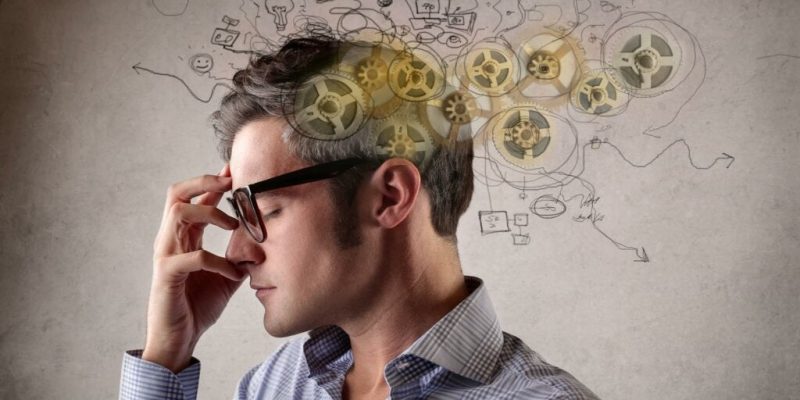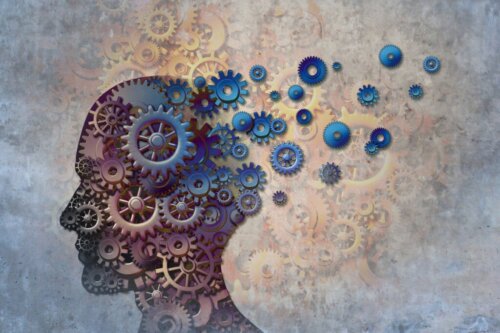Do you know what analytical thinking is? If we were to be guided by its name, we’d relate it to the word analyze. According to the Cambridge Dictionary, analyze means “to study something in a systematic and careful way”. While analysis is “the act of studying or examining something in detail, in order to discover or understand more about it”.
Therefore, this type of thinking allows you to break down problems (or tasks or products) into simpler parts, in order to know each one of them in detail, their relationships, as well as what function they have as a whole.
In this article, we’ll find out what analytical thinking is used for in fields such as mathematics and science, but also in your daily life. What are its characteristics? Does it imply a series of steps or a certain methodology? Find out here.
Analytical thinking
Analytical thinking is the type of thinking that involves reasoning and reflection on certain situations or problems. You use it to decide what to do with regard to specific tasks or simply to reflect on something general.
It operates by dividing the object of study or problem into smaller parts that can be identified, categorized, and analyzed, in order to obtain an adequate answer or solution to the question.
Analytical thinking is used in all kinds of situations, not only in solving mathematical or scientific problems but also in everyday life or other areas of knowledge. You can use it to make decisions, resolve conflict, reflect on specific issues, and understand the nature of particular problems.
Thinking as a human ability
Before moving on, we should mention that thought is all the activity of the human mind that’s obtained thanks to the intellect. In other words, it’s the product of the process of thinking or the process of the mind itself. Through thought, you obtain abstractions and reflections.
Cognitive theory, typical of psychology, allows you to divide the different types of thinking into critical, deductive, inductive, creative, lateral, and intuitive kinds. One of these is analytical thinking.
The characteristics of analytical thinking
Like any other type of thinking, analytical thinking has a series of inherent characteristics that define it. The most important are linked to its nature and functions. Analytical thinking is:
- Based on evidence and not on emotions.
- Involves questioning. In fact, it implies answering questions such as what or how?
- Is detailed. It analyzes the details of a problem.
- Is methodical and analytical.
- Develops our ability to investigate.
- Allows you to organize your thoughts with clarity and precision.
- Involves breaking down a problem into smaller parts in order to understand its structure and possible interrelationships.
- Allows you to identify the relevant and irrelevant points of a problem.
The methodology of analytical thinking
Through analytical thinking, you follow a series of steps that allow you to reach conclusions or a series of statements, theories, or reflections. You don’t always have to follow these steps (you can use a simpler methodology), but they can be useful. They’re as follows:
- Formulate a hypothesis.
- Reformulate the problem.
- Reflect on it.
- Propose strategies that allow you to reach conclusions. For example, divide the problem into smaller parts.
- Select the most appropriate strategies.
Analytical thinking sequence
We’ve shown you some steps that can be useful when using analytical thinking. To better understand it, we should also mention its sequence. When you think analytically, you ask yourself a series of questions about a problem and use the information you have to solve it.
This information can be obtained through observations, experiences, data, facts, and theories. Using what you collect from every source, you make inferences and interpretations and obtain a series of solutions or problems.
You must also think of a purpose or objective to be your frame of reference or action. In addition, you should analyze the previous assumptions that allow you to reach or better understand your objectives.
The purpose of analytical thinking
So far, we’ve talked about the general functions of analytical thinking. Now, we’re going to develop four of the most important ones in a little more detail:
Problem resolution
This type of thinking allows you to solve problems. You obtain different points of view from the current one and reflect and learn new strategies that allow you to reach your objectives or conclusions.
Decision making
When you need to make decisions, you can also use this type of thinking. Indeed, thanks to analytical thinking, you can collect information and analyze it (looking for the best strategies and solution alternatives) and choose the most appropriate ones (both strategies and solutions) according to your criteria.
The search for the truth
Through analytical thinking, which allows you to make inferences, you arrive at the ‘truth’ or ‘your truth’. In other words, what you set out to discover. After all, logically, there’s no one ‘truth’.
Development of new skills
Finally, this type of thinking allows you to develop other abilities, like thinking skills. For instance, logical thinking. This allows you to reason, analyze, compare, and synthesize. To do this, you can use different tools such as mental maps, word clouds, and brainstorming.

Exercises to enhance analytical thinking
Like all kinds, analytical thinking can also be trained through exercises. Here are some ideas:
- Board games. More particularly, those that involve strategies, the use of logic, or the deciphering of puzzles. In fact, in this case, the benefit is double, since you exercise analytical thinking while having fun and sharing with others.
- Puzzles. Putting together puzzles is another good option for developing this type of thinking. They contribute to the development of attention and the analysis of parts to reach a whole.
- Search Games. These are excellent alternatives for children. A couple of examples are treasure hunting or deciphering clues to solve a puzzle.
- Rubik’s Cube. This resource allows you to calculate and analyze movements in advance to arrive at a solution.
Analyzing to understand
As you’ve seen, analytical thinking allows you to go beyond your problems and understand their origins, nature, functions, causes, and consequences. As we said earlier, it implies understanding something in detail. In addition, it helps you to rigorously evaluate facts or information and to develop other skills, such as critical thinking or logical thinking.
Therefore, it’s a useful kind of thinking for many tasks or issues, both day-to-day and in the more academic or professional field.
“Sometimes what we cannot understand begins to make sense over time.”
-Anonymous-
The post Analytical Thinking appeared first on Exploring your mind.



















Comments